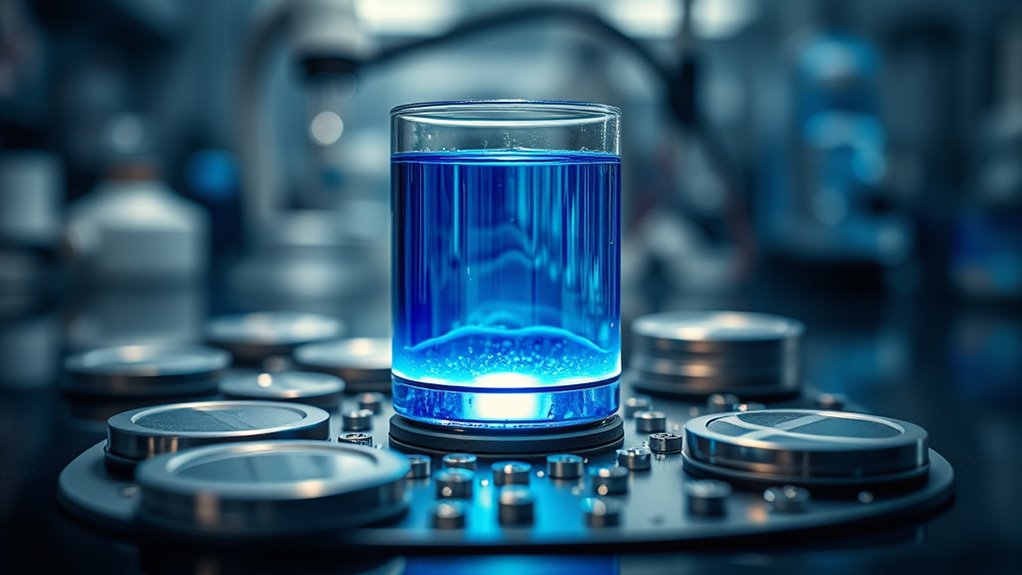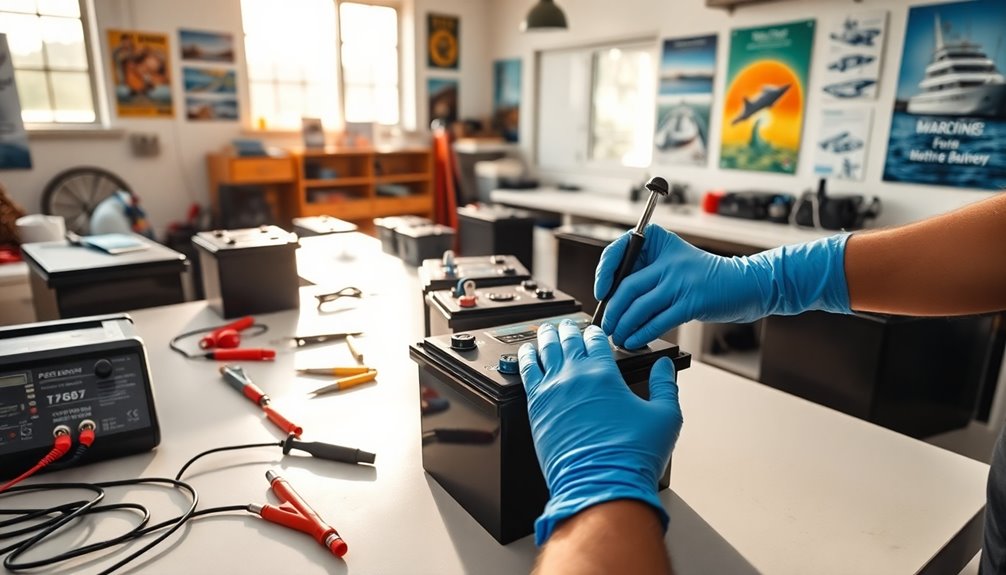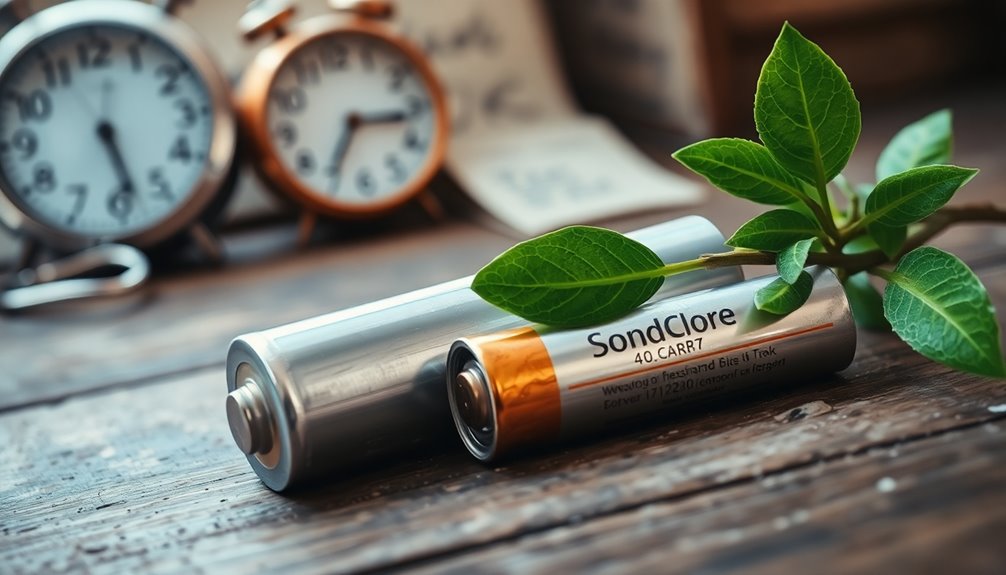Sodium-ion batteries are more than just hype—they’re shaping up as a real game changer. Thanks to abundant and sustainable materials, they offer significant cost advantages over lithium-ion systems. Advances in performance are narrowing the gap in energy density, making them suitable for large-scale storage, electric vehicles, and portable devices. Their eco-friendly sourcing and lower costs make them an attractive alternative for a greener, more affordable energy future. Exploring further reveals how this technology could revolutionize energy storage worldwide.
Key Takeaways
- Sodium-ion batteries offer a cost-effective and sustainable alternative to lithium-ion, promising lower raw material costs and eco-friendly sourcing.
- Technological advances are rapidly improving their capacity, lifespan, and charging speed, narrowing performance gaps with lithium systems.
- They are especially suitable for large-scale energy storage, driven by affordability, abundance, and environmental benefits.
- Ongoing innovations and research suggest sodium-ion batteries could significantly disrupt and complement existing energy storage markets.
- While still developing, their potential for widespread application makes them a promising game-changing technology rather than just hype.

Sodium-ion batteries are emerging as a promising alternative to lithium-ion technology, especially as the demand for affordable and sustainable energy storage grows. You might wonder how they stack up against the more established lithium systems, particularly in terms of cost and environmental impact. When you compare the cost comparison between sodium-ion and lithium-ion batteries, sodium-based options generally come out ahead. Sodium is far more abundant and easier to source than lithium, which is often mined under environmentally sensitive conditions. This abundance translates to lower raw material costs, making sodium-ion batteries potentially cheaper to produce at scale. As a result, manufacturers can offer more affordable energy storage solutions, which is vital for expanding applications like grid storage, electric vehicles, and portable devices.
Material sustainability is another key factor that makes sodium-ion batteries appealing. You’re likely aware that lithium extraction can cause significant environmental disruption, including water depletion and habitat destruction. Sodium, on the other hand, is plentiful in seawater and terrestrial deposits, which means sourcing it has a much lighter ecological footprint. Sodium-ion batteries also benefit from the fact that the materials used tend to be more abundant and less toxic, further supporting eco-conscious development. This sustainable aspect appeals to consumers and companies aiming to reduce their environmental impact. Additionally, the materials used in sodium-ion batteries tend to be more abundant and less toxic, further supporting eco-conscious development. This focus on sustainable materials not only benefits the planet but also offers a strategic advantage in terms of long-term supply stability. As demand for batteries increases, relying on materials with a lower environmental cost becomes increasingly important to avoid supply chain bottlenecks and price volatility.
You should also consider that the development of sodium-ion technology is advancing quickly, with ongoing improvements in battery capacity, lifespan, and charging speed. While lithium-ion batteries still dominate many markets, sodium-ion systems are closing the gap, especially for large-scale storage where cost and sustainability matter most. The lower cost of raw materials and greener profile of sodium-based batteries make them an attractive option for governments and companies seeking to meet renewable energy targets without exacerbating environmental issues. Although sodium-ion batteries currently face some technical challenges, such as lower energy density compared to lithium, research and innovation are steadily improving their performance. Moreover, ongoing breakthroughs in neural network integration and algorithm optimization are expected to accelerate performance enhancements in sodium-ion battery design.
Frequently Asked Questions
How Do Sodium-Ion Batteries Compare Cost-Wise to Lithium-Ion Batteries?
You’ll find sodium-ion batteries generally cost less than lithium-ion ones, mainly because sodium is more abundant and cheaper. This leads to potential cost savings, especially as sodium sources are more accessible globally. Additionally, the supply chain for sodium is less complex, reducing risks and expenses. Overall, sodium-ion batteries could offer a more economical alternative, making them attractive for large-scale energy storage and electric vehicle applications.
Are Sodium-Ion Batteries Environmentally More Sustainable Than Other Types?
You might wonder if sodium-ion batteries are more environmentally sustainable than others. They generally have a lower environmental impact because sodium is abundant and easier to source, enhancing resource sustainability. Plus, their production tends to be less harmful, reducing ecological damage. While they still face challenges, such as longevity, their use could lessen the strain on limited lithium resources, making them a greener option for future energy storage.
What Are the Main Challenges in Commercializing Sodium-Ion Batteries?
Imagine trying to build a bridge with fragile materials—you face scalability hurdles that threaten to crack under pressure. You’ll also encounter material limitations, like finding the right ingredients that balance performance and cost. These challenges make commercializing sodium-ion batteries tricky, as you need reliable, abundant resources and scalable production methods. Overcoming these hurdles is essential to turn sodium-ion batteries from a promising idea into a practical, widespread energy solution.
How Long Is the Typical Lifespan of a Sodium-Ion Battery?
You might wonder about the battery longevity of sodium-ion batteries. Typically, they last around 1,000 to 2,000 charge cycles, which translates to several years of use. Degradation factors like electrolyte stability and electrode material wear influence their lifespan. While they may not match lithium-ion batteries yet, ongoing advancements aim to improve their longevity, making them a promising sustainable alternative for future energy storage needs.
Can Sodium-Ion Technology Easily Integrate With Existing Battery Manufacturing?
You might worry that manufacturing integration and production scalability pose hurdles for sodium-ion batteries. However, these batteries can often adapt to existing production lines with minimal adjustments, making integration smoother than you’d expect. Their compatibility with current manufacturing processes means scaling up production is feasible, potentially lowering costs and speeding deployment. This flexibility could help sodium-ion technology become a practical alternative, supporting broader adoption without massive overhauls.
Conclusion
As you consider sodium-ion batteries, realize they could revolutionize energy storage like a lightning bolt striking the future. While some see hype, others believe they’ll reshape the landscape of renewable tech, making energy more accessible and affordable. Don’t dismiss their potential—this technology might just be the game changer you’ve been waiting for, transforming our world in ways that could outshine even the brightest stars. Stay curious; the future of batteries is brighter than ever.









